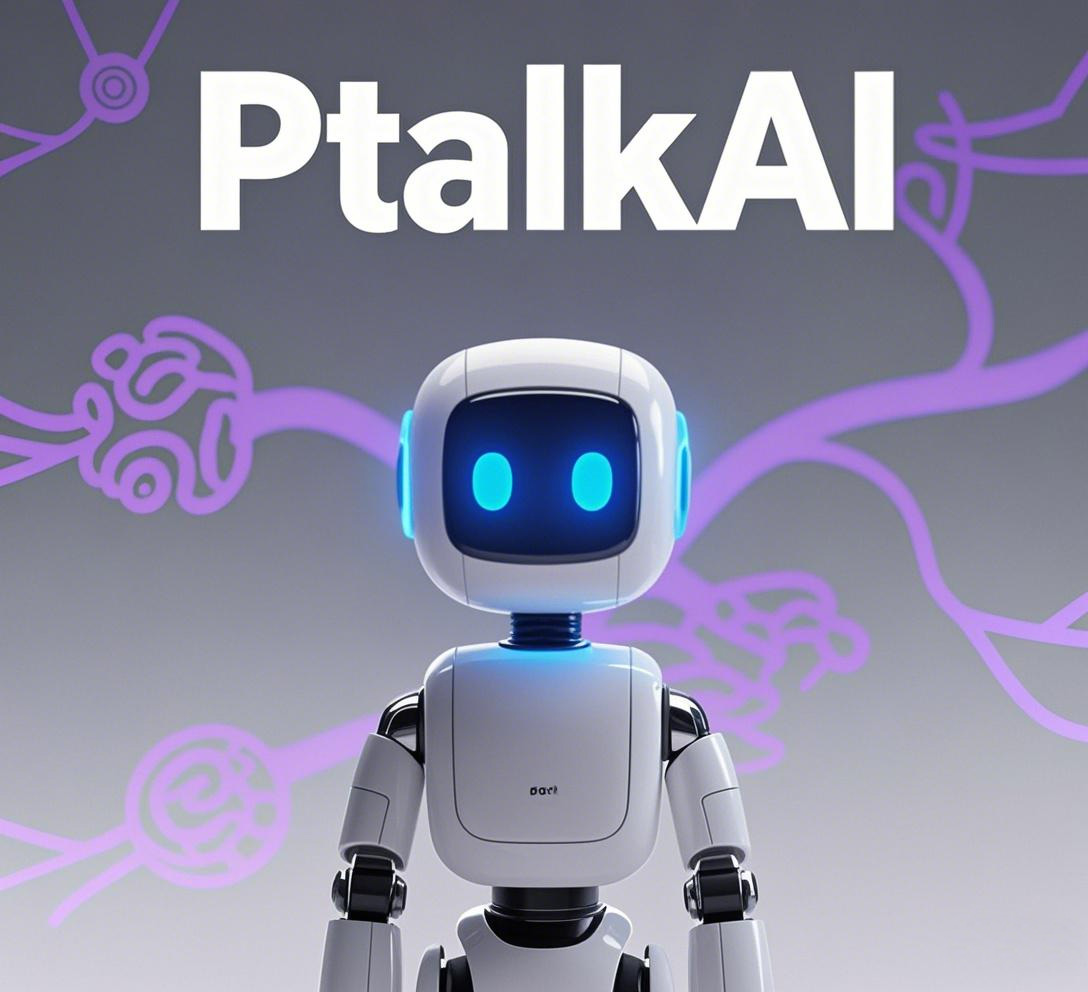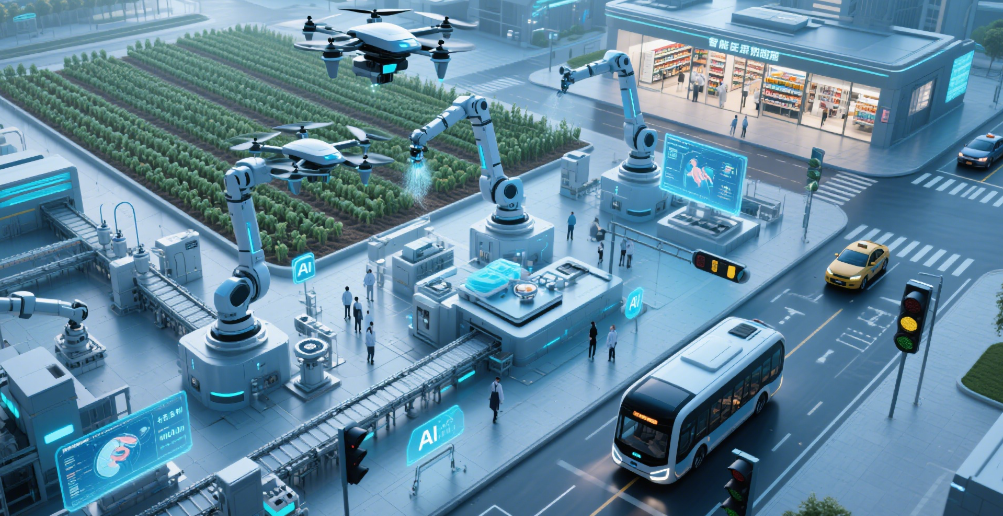Artificial Intelligence and Consumption: Reshaping the Modern Consumer Landscape
观棋 2025-06-24
In the digital age, Artificial Intelligence (AI) has emerged as a transformative force in the consumer sector, revolutionizing how businesses interact with customers, personalize experiences, and optimize operations. The integration of AI technologies with consumer-driven industries is not only enhancing customer satisfaction and engagement but also enabling companies to gain deeper insights into consumer behavior, predict trends, and deliver tailored solutions at scale. From personalized recommendation systems and intelligent customer service to supply chain optimization and dynamic pricing, AI is reshaping every facet of the consumer journey, creating a more intuitive, efficient, and personalized marketplace.
Personalized Recommendation Systems: Tailoring Experiences to Individual Tastes
Artificial Intelligence and Consumption: Reshaping the Modern Consumer Landscape
In the digital age, Artificial Intelligence (AI) has emerged as a transformative force in the consumer sector, revolutionizing how businesses interact with customers, personalize experiences, and optimize operations. The integration of AI technologies with consumer-driven industries is not only enhancing customer satisfaction and engagement but also enabling companies to gain deeper insights into consumer behavior, predict trends, and deliver tailored solutions at scale. From personalized recommendation systems and intelligent customer service to supply chain optimization and dynamic pricing, AI is reshaping every facet of the consumer journey, creating a more intuitive, efficient, and personalized marketplace.
Personalized Recommendation Systems: Tailoring Experiences to Individual Tastes
One of the most prominent applications of AI in consumption is the development of sophisticated personalized recommendation systems, which have become integral to e-commerce platforms, streaming services, and online marketplaces. These systems leverage machine learning algorithms to analyze vast amounts of consumer data, including browsing history, purchase behavior, demographic information, and even social media interactions, to predict and suggest products or services that align with individual preferences.
Collaborative filtering, a widely used technique in recommendation systems, works by identifying patterns in user behavior and recommending items that similar users have liked or purchased. For example, e-commerce giants like Amazon use AI-powered recommendation engines that suggest products based on a customer’s past purchases and browsing history, as well as the behavior of other users with similar tastes. This not only enhances the shopping experience by reducing the time customers spend searching for products but also significantly increases sales and customer loyalty.
In the realm of digital content consumption, platforms such as Netflix and Spotify employ AI-driven recommendation systems to curate personalized content playlists and movie suggestions. These systems use advanced natural language processing (NLP) and machine learning models to analyze user preferences, genre affinities, and viewing or listening patterns, creating highly tailored recommendations that keep users engaged. The success of these systems is evident in their ability to drive user retention and satisfaction, with studies showing that personalized recommendations can account for a significant portion of a platform’s revenue.
Intelligent Customer Service: Enhancing Engagement and Support
AI-powered customer service solutions, including chatbots and virtual assistants, are transforming how businesses interact with consumers, providing instant, personalized support while reducing operational costs. Traditional customer service models often suffer from long wait times, inconsistent responses, and limited availability, but AI-driven solutions offer 24/7 support, quick issue resolution, and the ability to handle multiple queries simultaneously.
Chatbots, equipped with natural language processing and machine learning capabilities, can understand and respond to customer inquiries in a conversational manner, guiding users through product selections, addressing FAQs, and even processing simple transactions. For example, many retail brands now deploy chatbots on their websites and social media platforms to assist customers with product information, sizing guidance, and order tracking. These chatbots can learn from each interaction, improving their response accuracy over time and adapting to different customer preferences.
In more complex scenarios, AI-powered virtual assistants can escalate issues to human agents when necessary, ensuring a seamless transition between automated and human support. Additionally, sentiment analysis tools, driven by AI, can analyze customer interactions to gauge satisfaction levels, identify potential issues, and provide businesses with valuable insights for improving products and services. This proactive approach to customer service not only enhances the consumer experience but also helps companies build stronger relationships with their customer base.
Supply Chain Optimization and Demand Forecasting
AI is also making significant inroads into supply chain management and demand forecasting, enabling businesses to optimize inventory levels, streamline logistics, and respond more effectively to changing consumer demands. Traditional supply chain models often rely on historical data and manual forecasts, which can be inaccurate and slow to adapt to market fluctuations. AI-driven solutions, however, can analyze real-time data from various sources, including social media trends, weather patterns, economic indicators, and point-of-sale systems, to generate more accurate demand predictions.
Machine learning algorithms, such as recurrent neural networks (RNNs) and long short-term memory (LSTM) networks, excel at processing time-series data and identifying complex patterns that human analysts might miss. By integrating these models with supply chain management systems, companies can forecast demand for products with greater precision, reducing the risk of overstocking or stockouts. This not only improves operational efficiency but also reduces costs associated with inventory holding and lost sales due to unavailable products.
In logistics and transportation, AI algorithms are used to optimize route planning, carrier selection, and delivery scheduling, taking into account factors such as traffic conditions, fuel costs, and delivery time windows. For example, major retailers and 物流公司 use AI-powered systems to manage their fleets, ensuring that deliveries are made as efficiently as possible, the same time reducing carbon emissions and transportation costs. The integration of AI with the Internet of Things (IoT), through smart sensors and connected devices, further enhances supply chain visibility, allowing businesses to track products in real-time from production to delivery.
Consumer Behavior Analysis and Dynamic Pricing
AI-driven consumer behavior analysis is providing businesses with unprecedented insights into how and why consumers make purchasing decisions, enabling more targeted marketing strategies and dynamic pricing models. By analyzing large datasets from multiple touchpoints, including online interactions, social media activity, and purchase history, AI models can identify patterns and trends in consumer behavior, predict future preferences, and segment audiences with greater precision.
This deep understanding of consumer behavior allows businesses to create highly targeted marketing campaigns that resonate with specific customer segments. For example, AI can identify which customers are most likely to respond to a particular promotion, what type of content they engage with the most, and at what time they are most active, enabling businesses to deliver personalized marketing messages that drive engagement and conversions.
Dynamic pricing, another key application of AI in consumption, involves adjusting product prices in real-time based on factors such as demand, supply, competitor prices, and customer behavior. AI algorithms can analyze market conditions and consumer willingness to pay, enabling businesses to optimize prices for maximum revenue and profitability. This is particularly common in industries such as travel, hospitality, and e-commerce, where prices for flights, hotel rooms, and consumer goods can fluctuate frequently based on demand and other variables.
Challenges and Ethical Considerations
While the integration of AI and consumption offers numerous benefits, it also presents several challenges and ethical considerations that must be addressed. One of the main challenges is the availability and quality of consumer data. AI models rely on large volumes of diverse and accurate data to perform effectively, but concerns about data privacy and security have become increasingly prominent in the digital age.
The collection and use of consumer data raise important ethical questions, particularly regarding informed consent, data storage, and potential misuse. Companies must ensure that they are transparent about how they collect and use customer data, obtain proper consent, and implement robust security measures to protect against data breaches. Additionally, there are concerns about algorithmic bias, where AI models may inadvertently discriminate against certain groups of consumers based on flawed or biased training data. Ensuring fairness and transparency in AI-powered decision-making is crucial for maintaining consumer trust.
Another challenge is the potential impact of AI on employment, as automated systems and AI-driven solutions may replace certain roles in customer service, marketing, and supply chain management. While AI has the potential to create new job opportunities in areas such as data science and AI development, it is essential for businesses and policymakers to invest in workforce training and development to ensure a smooth transition for affected workers.
The Future of AI in Consumption
The future of AI in the consumer sector is promising, with ongoing advancements in machine learning, natural language processing, and computer vision expected to further enhance the capabilities of AI systems in understanding and engaging with consumers. The development of more sophisticated AI models that can handle unstructured data, such as social media posts, customer reviews, and even video content, will open up new avenues for consumer behavior analysis and personalized marketing.
Additionally, the integration of AI with emerging technologies such as augmented reality (AR) and virtual reality (VR) holds great potential for transforming the consumer experience. AR-powered virtual 试穿 systems, for example, allow customers to visualize how products such as clothing, furniture, or cosmetics will look in their own environment before making a purchase, reducing the likelihood of returns and improving customer satisfaction. AI can enhance these AR experiences by personalizing recommendations and providing real-time feedback based on individual preferences.
The rise of voice commerce and smart assistants, driven by AI, is also expected to reshape the way consumers interact with brands and make purchasing decisions. Voice-activated devices and virtual assistants like Amazon’s Alexa and Google Assistant are increasingly being used for shopping, as they offer a convenient and hands-free way to browse products, compare prices, and place orders. AI will continue to improve the accuracy and intuitiveness of these voice-based interactions, making them more seamless and natural for consumers.
In conclusion, the integration of AI and consumption is driving a fundamental transformation in how businesses engage with customers, personalize experiences, and optimize operations. From personalized recommendation systems and intelligent customer service to supply chain optimization and dynamic pricing, AI is revolutionizing every aspect of the consumer journey, creating a more connected, intuitive, and efficient marketplace. As technology continues to advance, it is essential for businesses, policymakers, and consumers to work together to harness the full potential of AI while addressing the associated challenges and ethical considerations. By doing so, we can create a more personalized, inclusive, and sustainable future for the consumer sector.
In the digital age, Artificial Intelligence (AI) has emerged as a transformative force in the consumer sector, revolutionizing how businesses interact with customers, personalize experiences, and optimize operations. The integration of AI technologies with consumer-driven industries is not only enhancing customer satisfaction and engagement but also enabling companies to gain deeper insights into consumer behavior, predict trends, and deliver tailored solutions at scale. From personalized recommendation systems and intelligent customer service to supply chain optimization and dynamic pricing, AI is reshaping every facet of the consumer journey, creating a more intuitive, efficient, and personalized marketplace.
Personalized Recommendation Systems: Tailoring Experiences to Individual Tastes
One of the most prominent applications of AI in consumption is the development of sophisticated personalized recommendation systems, which have become integral to e-commerce platforms, streaming services, and online marketplaces. These systems leverage machine learning algorithms to analyze vast amounts of consumer data, including browsing history, purchase behavior, demographic information, and even social media interactions, to predict and suggest products or services that align with individual preferences.
Collaborative filtering, a widely used technique in recommendation systems, works by identifying patterns in user behavior and recommending items that similar users have liked or purchased. For example, e-commerce giants like Amazon use AI-powered recommendation engines that suggest products based on a customer’s past purchases and browsing history, as well as the behavior of other users with similar tastes. This not only enhances the shopping experience by reducing the time customers spend searching for products but also significantly increases sales and customer loyalty.
In the realm of digital content consumption, platforms such as Netflix and Spotify employ AI-driven recommendation systems to curate personalized content playlists and movie suggestions. These systems use advanced natural language processing (NLP) and machine learning models to analyze user preferences, genre affinities, and viewing or listening patterns, creating highly tailored recommendations that keep users engaged. The success of these systems is evident in their ability to drive user retention and satisfaction, with studies showing that personalized recommendations can account for a significant portion of a platform’s revenue.
Intelligent Customer Service: Enhancing Engagement and Support
AI-powered customer service solutions, including chatbots and virtual assistants, are transforming how businesses interact with consumers, providing instant, personalized support while reducing operational costs. Traditional customer service models often suffer from long wait times, inconsistent responses, and limited availability, but AI-driven solutions offer 24/7 support, quick issue resolution, and the ability to handle multiple queries simultaneously.
Chatbots, equipped with natural language processing and machine learning capabilities, can understand and respond to customer inquiries in a conversational manner, guiding users through product selections, addressing FAQs, and even processing simple transactions. For example, many retail brands now deploy chatbots on their websites and social media platforms to assist customers with product information, sizing guidance, and order tracking. These chatbots can learn from each interaction, improving their response accuracy over time and adapting to different customer preferences.
In more complex scenarios, AI-powered virtual assistants can escalate issues to human agents when necessary, ensuring a seamless transition between automated and human support. Additionally, sentiment analysis tools, driven by AI, can analyze customer interactions to gauge satisfaction levels, identify potential issues, and provide businesses with valuable insights for improving products and services. This proactive approach to customer service not only enhances the consumer experience but also helps companies build stronger relationships with their customer base.
Supply Chain Optimization and Demand Forecasting
AI is also making significant inroads into supply chain management and demand forecasting, enabling businesses to optimize inventory levels, streamline logistics, and respond more effectively to changing consumer demands. Traditional supply chain models often rely on historical data and manual forecasts, which can be inaccurate and slow to adapt to market fluctuations. AI-driven solutions, however, can analyze real-time data from various sources, including social media trends, weather patterns, economic indicators, and point-of-sale systems, to generate more accurate demand predictions.
Machine learning algorithms, such as recurrent neural networks (RNNs) and long short-term memory (LSTM) networks, excel at processing time-series data and identifying complex patterns that human analysts might miss. By integrating these models with supply chain management systems, companies can forecast demand for products with greater precision, reducing the risk of overstocking or stockouts. This not only improves operational efficiency but also reduces costs associated with inventory holding and lost sales due to unavailable products.
In logistics and transportation, AI algorithms are used to optimize route planning, carrier selection, and delivery scheduling, taking into account factors such as traffic conditions, fuel costs, and delivery time windows. For example, major retailers and 物流公司 use AI-powered systems to manage their fleets, ensuring that deliveries are made as efficiently as possible, the same time reducing carbon emissions and transportation costs. The integration of AI with the Internet of Things (IoT), through smart sensors and connected devices, further enhances supply chain visibility, allowing businesses to track products in real-time from production to delivery.
Consumer Behavior Analysis and Dynamic Pricing
AI-driven consumer behavior analysis is providing businesses with unprecedented insights into how and why consumers make purchasing decisions, enabling more targeted marketing strategies and dynamic pricing models. By analyzing large datasets from multiple touchpoints, including online interactions, social media activity, and purchase history, AI models can identify patterns and trends in consumer behavior, predict future preferences, and segment audiences with greater precision.
This deep understanding of consumer behavior allows businesses to create highly targeted marketing campaigns that resonate with specific customer segments. For example, AI can identify which customers are most likely to respond to a particular promotion, what type of content they engage with the most, and at what time they are most active, enabling businesses to deliver personalized marketing messages that drive engagement and conversions.
Dynamic pricing, another key application of AI in consumption, involves adjusting product prices in real-time based on factors such as demand, supply, competitor prices, and customer behavior. AI algorithms can analyze market conditions and consumer willingness to pay, enabling businesses to optimize prices for maximum revenue and profitability. This is particularly common in industries such as travel, hospitality, and e-commerce, where prices for flights, hotel rooms, and consumer goods can fluctuate frequently based on demand and other variables.
Challenges and Ethical Considerations
While the integration of AI and consumption offers numerous benefits, it also presents several challenges and ethical considerations that must be addressed. One of the main challenges is the availability and quality of consumer data. AI models rely on large volumes of diverse and accurate data to perform effectively, but concerns about data privacy and security have become increasingly prominent in the digital age.
The collection and use of consumer data raise important ethical questions, particularly regarding informed consent, data storage, and potential misuse. Companies must ensure that they are transparent about how they collect and use customer data, obtain proper consent, and implement robust security measures to protect against data breaches. Additionally, there are concerns about algorithmic bias, where AI models may inadvertently discriminate against certain groups of consumers based on flawed or biased training data. Ensuring fairness and transparency in AI-powered decision-making is crucial for maintaining consumer trust.
Another challenge is the potential impact of AI on employment, as automated systems and AI-driven solutions may replace certain roles in customer service, marketing, and supply chain management. While AI has the potential to create new job opportunities in areas such as data science and AI development, it is essential for businesses and policymakers to invest in workforce training and development to ensure a smooth transition for affected workers.
The Future of AI in Consumption
The future of AI in the consumer sector is promising, with ongoing advancements in machine learning, natural language processing, and computer vision expected to further enhance the capabilities of AI systems in understanding and engaging with consumers. The development of more sophisticated AI models that can handle unstructured data, such as social media posts, customer reviews, and even video content, will open up new avenues for consumer behavior analysis and personalized marketing.
Additionally, the integration of AI with emerging technologies such as augmented reality (AR) and virtual reality (VR) holds great potential for transforming the consumer experience. AR-powered virtual 试穿 systems, for example, allow customers to visualize how products such as clothing, furniture, or cosmetics will look in their own environment before making a purchase, reducing the likelihood of returns and improving customer satisfaction. AI can enhance these AR experiences by personalizing recommendations and providing real-time feedback based on individual preferences.
The rise of voice commerce and smart assistants, driven by AI, is also expected to reshape the way consumers interact with brands and make purchasing decisions. Voice-activated devices and virtual assistants like Amazon’s Alexa and Google Assistant are increasingly being used for shopping, as they offer a convenient and hands-free way to browse products, compare prices, and place orders. AI will continue to improve the accuracy and intuitiveness of these voice-based interactions, making them more seamless and natural for consumers.
In conclusion, the integration of AI and consumption is driving a fundamental transformation in how businesses engage with customers, personalize experiences, and optimize operations. From personalized recommendation systems and intelligent customer service to supply chain optimization and dynamic pricing, AI is revolutionizing every aspect of the consumer journey, creating a more connected, intuitive, and efficient marketplace. As technology continues to advance, it is essential for businesses, policymakers, and consumers to work together to harness the full potential of AI while addressing the associated challenges and ethical considerations. By doing so, we can create a more personalized, inclusive, and sustainable future for the consumer sector.












